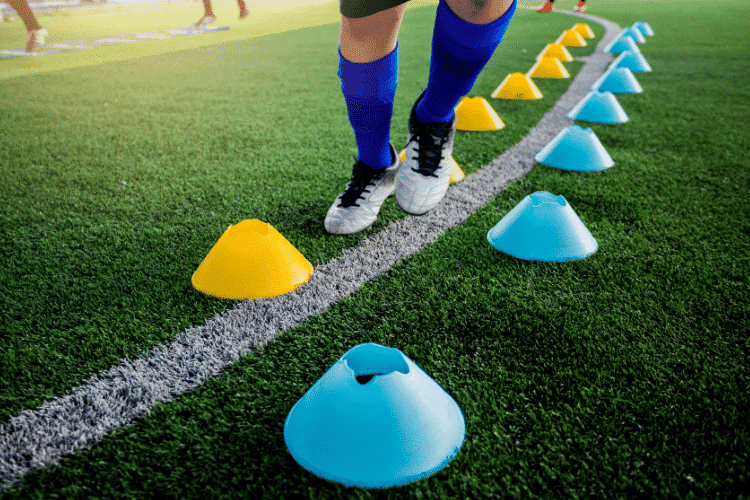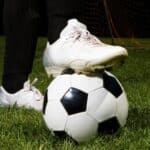You know how important it is to have the right pair when you’re out there on the field, right? Well, here’s the deal: turf shoes are all the rage for their versatility on different surfaces.
Whether you’re playing on grass or artificial turf, they’ve got you covered.
But can you use turf cleats on natural grass? It’s a common question among soccer players, but don’t worry, we’re here to help you out!
In this article, we’ll explore whether turf cleats are a go-to option on the grass or if they prefer sticking to artificial turf fields.
We’ll weigh the pros and cons and provide the essential insights you need to make an informed decision. So, let’s get right into it and untangle this soccer shoe mystery!
Table of Contents
- 1 Understanding Turf Shoes and Their Features
- 2 Turf Cleats on Grass: The Pros and Cons
- 3 Optimal Shoe Selection for Different Playing Surfaces
- 4 The Impact of Surface on Footwear Performance
- 5 The Definitive Answer: Turf Cleats on Grass
- 6 Frequently Asked Questions (FAQs)
- 7 The Final Score.
- 8 This article was written by
Understanding Turf Shoes and Their Features
Turf shoes, also known as artificial grass or AG shoes, are specifically designed for playing on artificial turf surfaces.
They are equipped with rubber studs or nubs on the outsole, providing excellent traction and grip on artificial surfaces.
Turf shoes are widely used for playing on indoor courts, artificial turf fields, and other hard surfaces.
However, they may not be the best pick if you’re playing on natural grass.
Turf Cleats on Grass: The Pros and Cons
Pros of Using Turf Cleats on Natural Grass Fields:
- Versatility: Despite not being the best choice for natural grass, turf cleats can still be used on both artificial turf and natural grass surfaces, offering you more flexibility in your footwear.
- Comfort: The flat rubber sole of turf shoes provides maximum comfort, making them suitable for extended play on various outdoor surfaces.
- Durability: Turf shoes are designed to withstand the abrasiveness of artificial turf, making them more durable on artificial grass than other shoe types. Keep in mind that durability is still highly affected by how well you take care of and clean your shoes.
Cons of Using Turf Cleats on Natural Grass Fields:
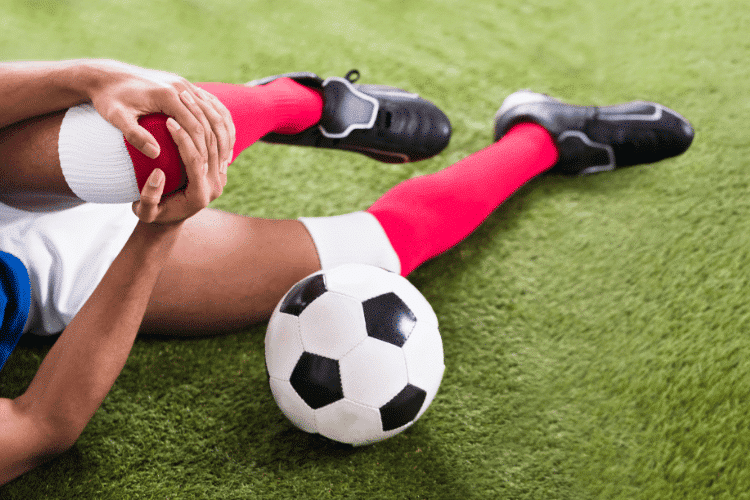
- Injury Risks: The rubber studs on turf shoes may not provide enough traction on wet grass, increasing the risk of slips and injuries.
- Lack of Optimal Grip: Compared to traditional soccer cleats with metal or plastic studs, turf shoes might not offer the same level of grip on natural grass surfaces.
Optimal Shoe Selection for Different Playing Surfaces
- Turf Soccer Cleats: As mentioned earlier, turf soccer cleats with rubber studs are designed for artificial turf surfaces. They provide excellent traction on artificial turfs, making them the ideal choice for indoor courts and artificial turf fields.
- Firm Ground Shoes (FG): For natural grass fields, firm ground shoes with either metal or plastic studs are recommended. These shoes offer maximum grip on wet and real grass, reducing the risk of slips and injuries.
- Indoor Soccer Shoes: Indoor soccer shoes, also known as futsal shoes, are specifically designed for playing on indoor courts and hard surfaces. They have flat rubber soles that provide good traction and prevent marking on the playing surface.
The Impact of Surface on Footwear Performance
The type of surface you play on significantly affects the performance of your footwear.
For instance, using turf cleats on artificial turf surfaces allows for the best grip and maneuverability.
However, on natural grass fields, you might experience reduced traction and increased slipping when wearing turf cleats or astros.
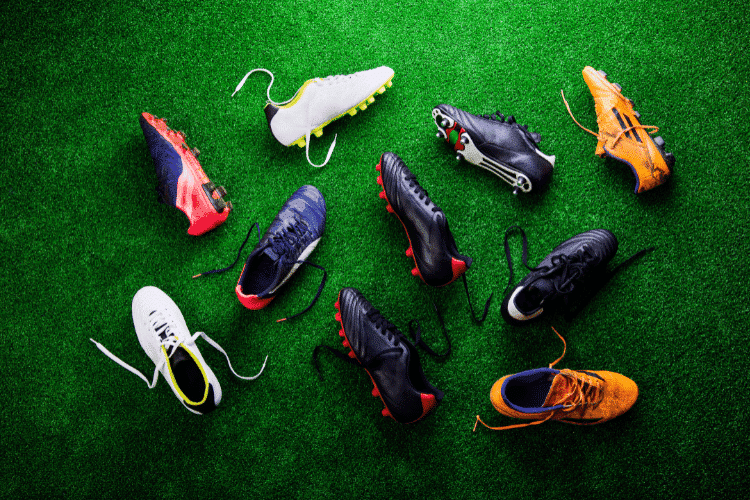
This doesn’t only reduce your performance, but can also result in slipping and potential injuries.
The Definitive Answer: Turf Cleats on Grass
While turf cleats can be used on natural grass fields, it’s essential to weigh the pros and cons before making a decision.
Factors such as playing conditions, weather, and personal preference come into play.
If you primarily play on both artificial turf and natural grass, having a versatile pair of shoes might be the way to go.
However, for optimal grip and safety on natural grass fields, traditional firm ground soccer shoes with metal or plastic studs are recommended.
Frequently Asked Questions (FAQs)
1. Can you use turf cleats on wet grass?
It’s not recommended. Using turf cleats on wet grass may increase the risk of slips and falls due to reduced traction.
It’s best to opt for soft ground soccer shoes with metal or plastic studs for enhanced grip on wet grass surfaces.
2. Are turf cleats suitable for outdoor soccer fields?
While turf cleats can be used on outdoor soccer fields, they might not provide the same level of grip as traditional firm ground soccer shoes with metal or plastic studs.
3. Can I use indoor soccer shoes on artificial turf fields?
Indoor soccer shoes, with their flat rubber soles, are designed for playing on indoor courts and might not provide enough traction on artificial turf fields.
It’s best to use turf soccer shoes specifically designed for artificial turf surfaces.
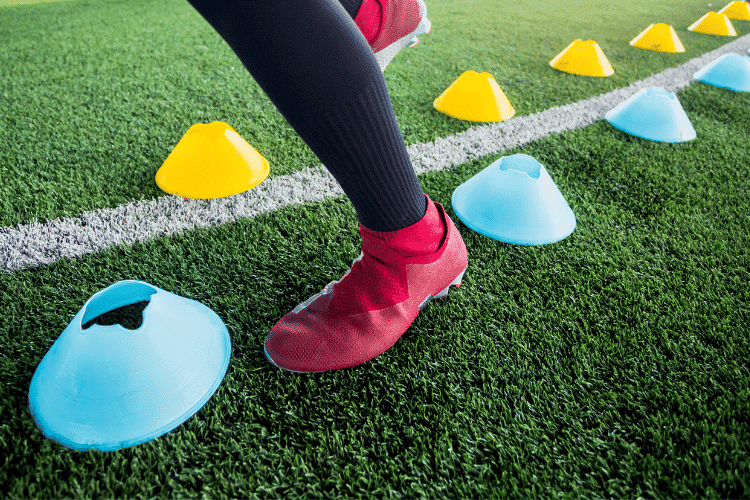
4. Can I wear turf cleats on wet grass?
While it’s possible to use turf cleats on natural grass, using them on wet grass isn’t advisable.
The plastic studs will lose a considerable amount of traction, and the wearer will lose balance more often than they like.
5. Can I use turf cleats on dirt?
The answer to this question depends on the manufacturer’s design and personal preference, as some people find turf shoes on dirt comfortable, while others don’t
A good rule of thumb is that, as long as the dirt is dry, you can safely wear turf cleats if you find them comfortable.
However, wearing turf cleats on wet or muddy dirt could be dangerous.
The Final Score.
At the end of the day, the use of turf cleats on grass depends on various factors, including personal preference, playing surfaces, and risk considerations.
Turf cleats offer versatility for both artificial turf and natural grass fields, but players should be mindful of the potential risks, especially on wet grass (whether it’s real or artificial).
For the best performance and safety, use firm ground soccer shoes with metal studs for natural grass, and turf cleats with plastic studs for artificial ones.
